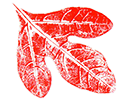
The American beech (Fagus grandifolia) is a tall, deciduous tree that is native to the eastern U.S. It is the only beech tree native to North America. Other beech species are native to Europe and are sometimes planted as ornamentals. However, when most people in the eastern U.S. talk about beeches they are referring to the American beech.
The American beech can grow to a height of approximately 120 feet, but about half that height is more typical. Beech trees are considered shade loving trees because beech saplings grow in shaded forests. A forest with lots of maples and beech trees in the canopy is considered a mature forest and in the latter stages of succession. American beeches can live to be several hundred years old.
Beeches are extremely important to wildlife, but it can take a while before their importance is fully realized. A beech tree may be 40 years old before it begins to flower and produce beech nuts. Beech nuts are a valuable food crop for a wide range of animals including deer, squirrels, chipmunks, turkeys, woodpeckers, and several species of songbirds. Historically, beech nuts were one of the primary fall foods for the passenger pigeon. It is said that passenger pigeons would flock to trees with ripe beech nuts in such numbers that the weight of the birds would break branches off the trees. As beech trees mature, any cavities that form provide shelter for the many different types of wildlife that use hollow trees. The leaves are also an important food for the caterpillars of several moth species and at least one species of butterfly.
The American beech tree is one of the easiest trees to learn to identify in the winter. Beech bark is a light grey and is very smooth. Many trees have relatively smooth bark when they are young, but beech bark stays smooth no matter how old the tree gets. Beech bark is often described as looking like elephant legs. I like that description because it perfectly describes both the color and the texture of the bark. Because beech bark is so smooth, it is often vandalized by people carving their initials or other things into the bark. Those scars will never disappear and can allow diseases and pests to infect the tree, just like a cut on our own bodies can allow infections to become established in us.



This article was part of Shannon’s original Kentucky Pollinators and Backyard Wildlife blog which evolved into the blog for Backyard Ecology.

Backyard Ecology: Exploring Nature in Your Backyard
Nature isn’t just “out there.” It’s all around us, including right outside our doors. Hi, my name is Shannon Trimboli, and I am the host of Backyard Ecology. I live in southcentral Kentucky and am a wildlife biologist, educator, author, beekeeper, and owner of a nursery specializing in plants for pollinators and wildlife conservation. I invite you to join me as we ignite our curiosity and natural wonder, explore our yards and communities, and improve our local pollinator and wildlife habitat. Learn more or subscribe to my email list at www.backyardecology.net.

Leave a Reply